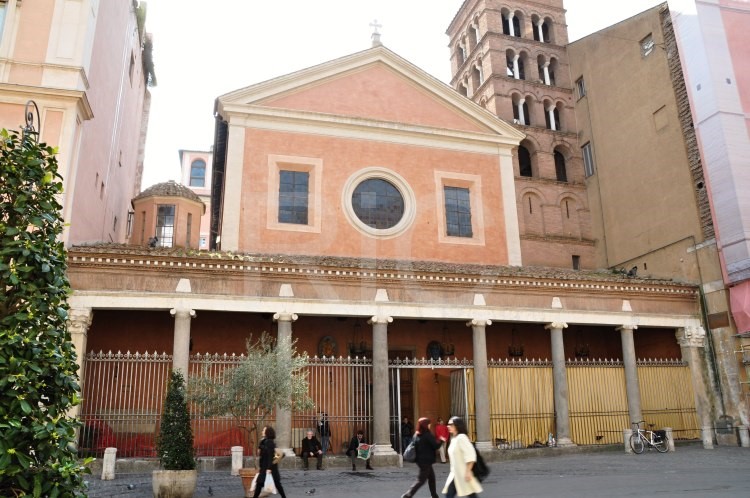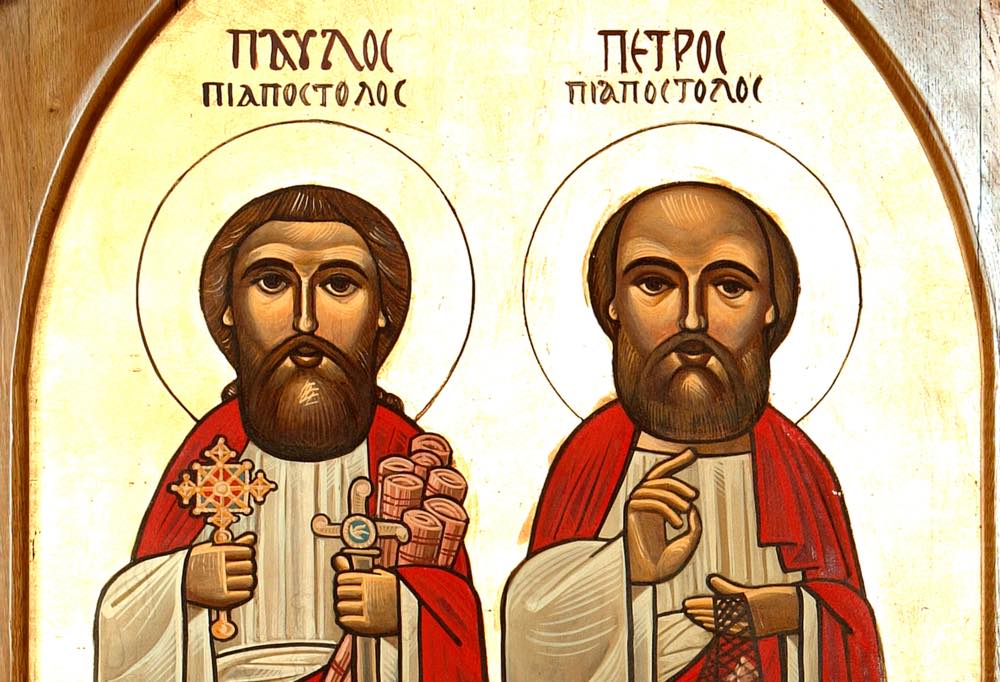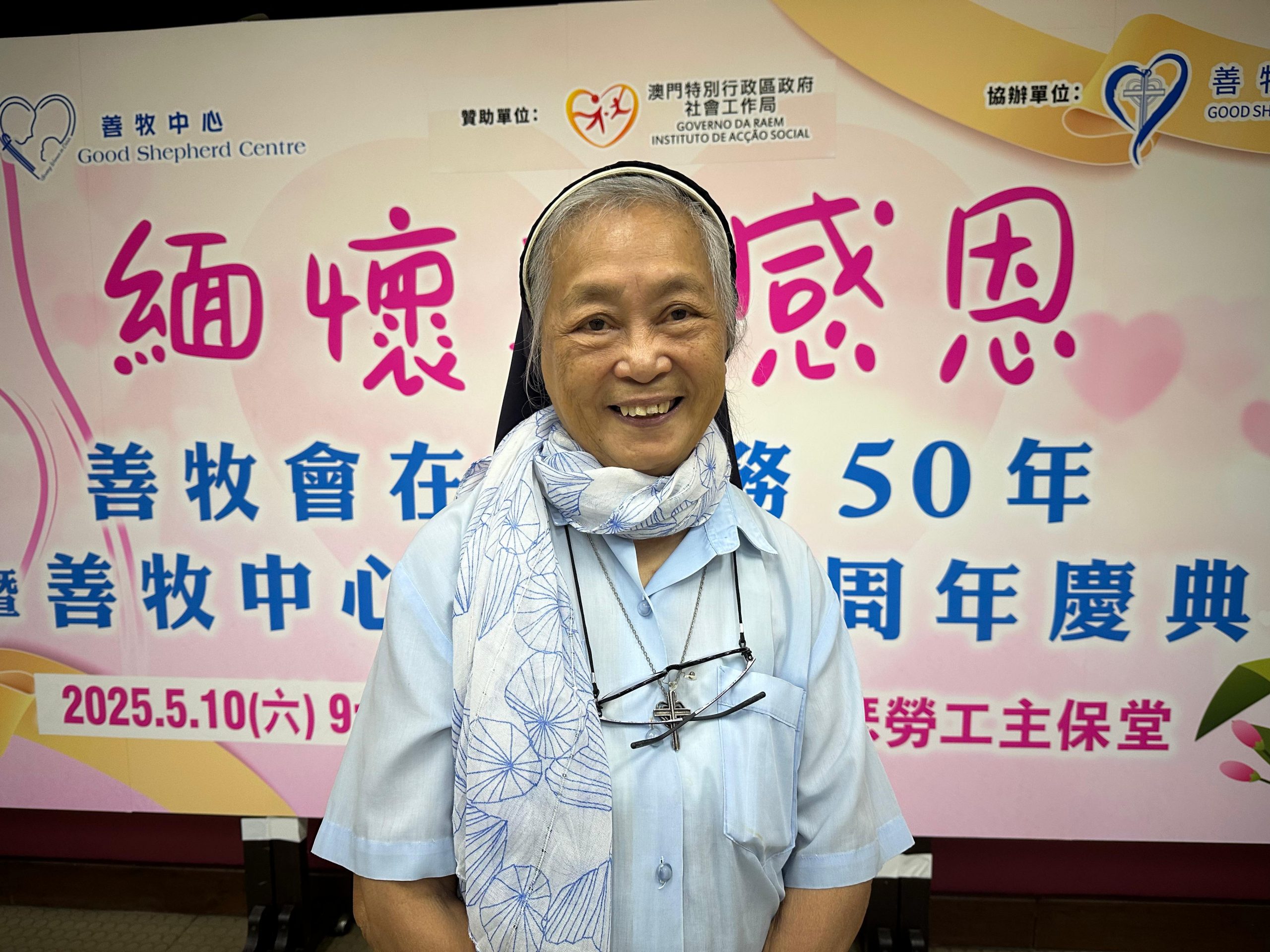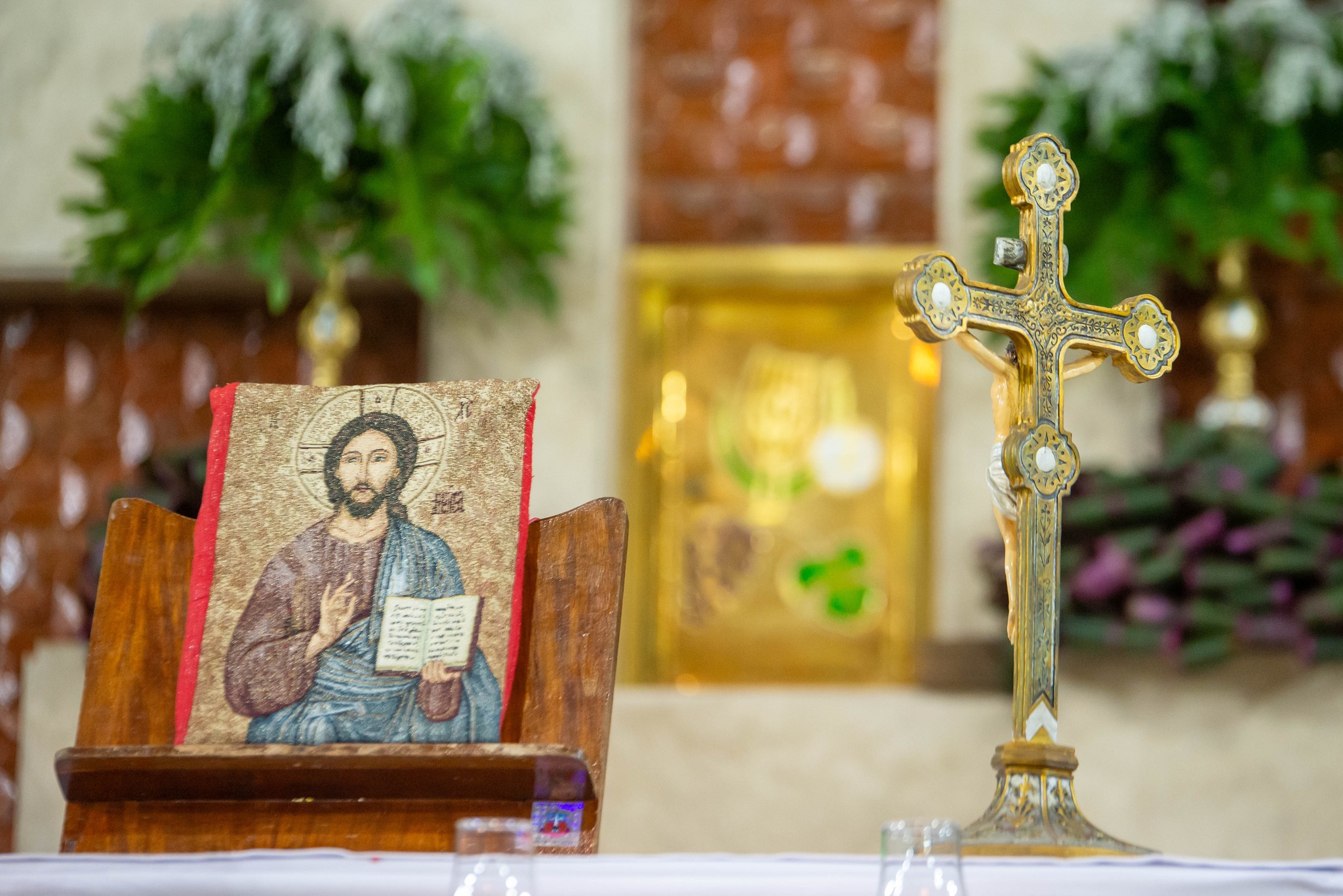– Anastasios
There is another important church that we find in the via del Corso, one of the main avenues in Rome, connecting Piazza Venezia with Piazza del Popolo. San Lorenzo in Lucina is a very beautiful church that can be found on a little square in the via del Corso, an area that is frequented by quite wealthy and powerful people. In this square, was situated the office of one of the most powerful men in Italy, Giulio Andreotti, who was very close to Paul VI and who had several times been the prime minister of Italy.
The church, a minor Basilica, has a very long history: “Memories of the basilica are read in the Gesta inter Liberium et Felicem of 366. Restored and enlarged by Sixtus III, on land donated by the emperor Valentinian III (Lib. Pont. XLVI, 5), the parish, according to several texts, begins in 314 after the period of management of the “Titulus Lucinae.”
In 366 Damasus was elected as the legitimate Pope in San Lorenzo in Lucina. The specificity declared by historians about the election that took place “in Lucinis” indicates the primacy of the Basilica in comparison to the election of the antipope Ursino that took place on the same day in S. Maria in Trastevere (Epistulas Imperatorum Pontilicum, CSEL, 35, Vienna 1895, p. 2). Sixtus III (432-440) rebuilt the Basilica (Lib. Pont. I, 235), which over the centuries will always be enriched more and more with works of art by Bernini, Guido Reni, Simon Vouet. The presence of the relic of St Alexander I Pope (105-1 15) and of the “graticule” of the martyrdom of Lorenzo (“procul dubio” about authenticity) is a glimpse of history that opens to the memory of first sacredness of the Roman Church.” (diocesidiroma.it).
Why the name “in Lucina?”: “The toponym of this square and the basilica of the same name that stands here is somewhat uncertain: for many years Lucina was believed to have been a Roman matron, all faith and mercy, who would have founded in her home, according to the ancient custom of some mostly patrician residences, an “ecclesia domestica”, which is a place intended for worship not in a public basilica, but in a private house. Lucina later donated her home to the Roman Church, which thus became the first foundation of the future church of San Lorenzo.
The second and, at the moment, more reliable hypothesis, however, is due to the findings made in the basement of the basilica in 1983 and 1985 by the Archaeological Superintendency of Rome, when traces of various phases of the imperial era were brought to light, which confirmed the presence of an ecclesia. The oldest building, of which little remains, except for a black and white mosaic floor, dates back to the 2nd century AD, then replaced in the following century by a larger insula, dated, thanks to the brick stamps unearthed, at the time of Caracalla. The ancient building corresponds to a “Domus Lucinae”, a pre-Christian temple dedicated to the goddess Juno Lucina, from which the toponym of the square and basilica would derive, which was then used for Christian worship and later transformed into the first basilica. This goddess was invoked at the time of childbirth (“she who makes the newborn see the light”) and for this reason the women of ancient Rome drew “miraculous” water, at the temple, to take care of themselves or to have children: this tradition is confirmed by the discovery, during the excavations under the Capitular Room, of a well and a wonderful intact mosaic, with white marble steps and frescoed walls, which supports the hypothesis that it could be just a temple dedicated to the goddess Juno Lucina. The area was subsequently excavated in several stages from 1993 to 1998 by the Archaeological Superintendency together with the Swedish Institute of Classical Studies and structures relating to the early paleochristian basilica and to the remaking of the XII century (a Cosmatesque floor) were found: a part came to light of a circular baptismal basin and a smaller rectangular basin, identified as the baptistery of the early church.” (romasegreta.it).
In 1988, Saint John Paul II visited this parish, and among other things he has said: “Dear brothers and sisters of the parish of San Lorenzo in Lucina, the call of Christ, the familiarity with him and the sending to the world are three phases of that journey of holiness, which today is given to you to carry out in a very particular way with your Bishop. While with you I thank the Lord for the gift of this Eucharist, which we celebrate with faith in a Basilica as old as it is illustrious, I am happy to show you my joy to be among you.” Certainly “old and illustrious” is a good way to describe this temple. (Photo credit: http://www.romaincamper.it/)


 Follow
Follow


